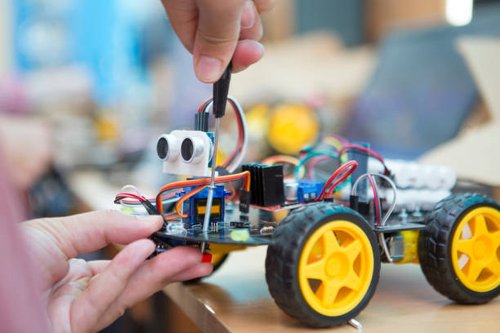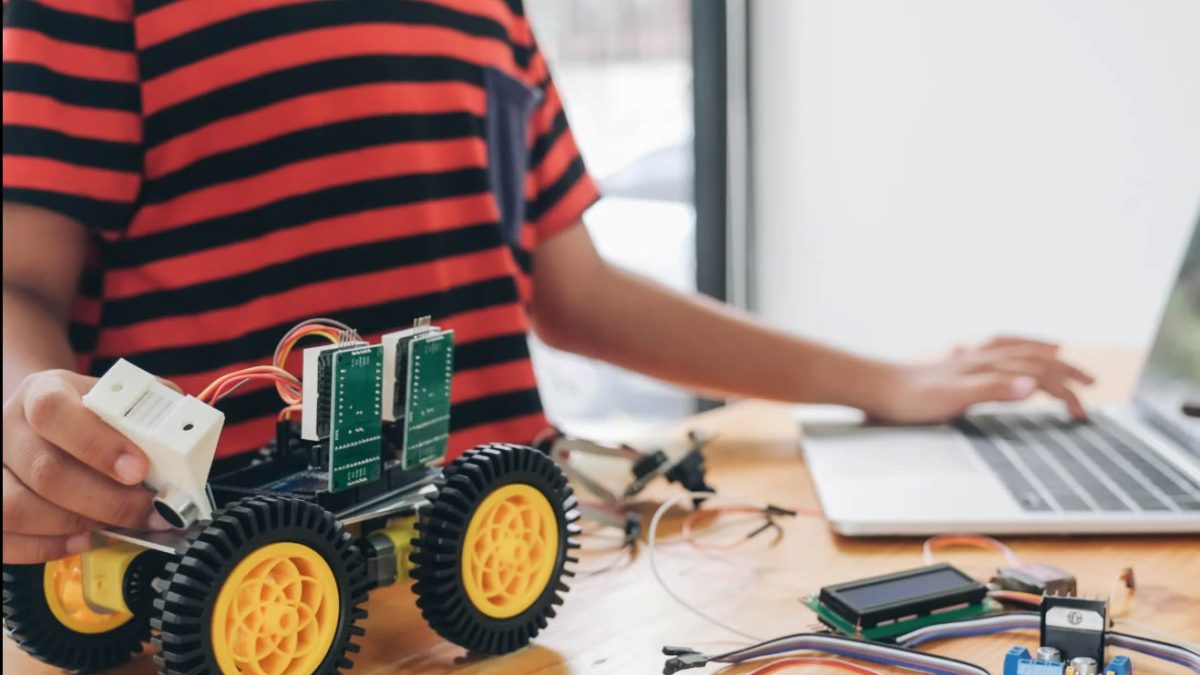The fusion of Artificial Intelligence (AI) and the Internet of Things (IoT)—known as AIoT—is revolutionizing education, particularly in Science, Technology, Engineering, and Mathematics (STEM). AIoT combines the intelligent decision-making power of AI with the connectivity and real-time data collection of IoT, enabling smart, personalized, and interactive learning experiences.
In STEM education, AIoT transforms teaching methodologies, laboratory experiments, remote learning, and skill acquisition, preparing students for the digital economy.

Key Components of AIoT in STEM Education
- AI-Powered Smart Classrooms
- AI-driven virtual assistants help answer students’ queries.
- IoT-connected smartboards and interactive simulations improve engagement.
- AI personalized learning systems tailor content based on students’ progress.
- Intelligent Laboratory Experiments
- IoT-enabled smart lab equipment automates data collection and analysis.
- AI algorithms detect patterns in experimental results, improving research accuracy.
- Remote-controlled lab setups allow students to conduct virtual experiments.
- Real-Time Data Analytics for STEM Learning
- AIoT sensors collect environmental and industrial data for real-world applications.
- Students use real-time data to learn predictive analysis, machine learning, and engineering concepts.
- Remote Learning & Virtual STEM Labs
- IoT-enabled VR/AR labs create immersive STEM experiences.
- AI-driven chatbots and tutors provide real-time assistance to remote learners.
- AI-Driven Robotics and Automation
- IoT-connected robots are used in STEM education for coding, engineering, and problem-solving.
- AI enhances robot intelligence, enabling students to explore robotic automation and control systems.
Benefits of AIoT in STEM Education
- Personalized Learning – AI adapts STEM content to suit individual learning speeds and styles.
- Enhanced Engagement – Interactive simulations, smart experiments, and AI tutors make STEM subjects exciting.
- Real-World Applications – IoT-driven data collection connects classroom learning with practical industry applications.
- Accessibility & Inclusion – AIoT-powered tools support students with disabilities through voice recognition, smart wearables, and adaptive learning platforms.
- Skill Development for Industry 4.0 – AIoT equips students with coding, data analysis, and automation skills, essential for future careers in AI, IoT, and robotics.
Challenges and Considerations
- Infrastructure & Cost – AIoT implementation requires investment in smart devices, networks, and cloud computing.
- Data Privacy & Security – Schools must ensure secure data handling and compliance with privacy laws.
- Teacher Training – Educators need to be trained in AIoT tools and methodologies to effectively integrate them into STEM curricula.
In conclusion, AIoT is reshaping STEM education by making learning smarter, interactive, and data-driven. As AI and IoT technologies continue to evolve, their integration into classrooms and labs will empower the next generation of STEM professionals. Institutions must invest in AIoT-driven education systems, ensuring that students are well-prepared for the digital and AI-driven economy.
AIoT is not just the future of STEM education—it is the present. The question is: Are we ready to embrace it?

